QuestionI got a puppy February 08, and did a Wisdom Panel test to find out that she is a German/Australian/Wolf mix. This came as a big surprise. I tried to socialize her while she was young and we lived in an apartment complex with other dogs. She was always ready to play and greet the neighbors. She never barked at the other dogs walking. Then in October 08 we moved into a house where she had a yard. Then she started barking at people walking down the street and at the neighbors in their yard. We put up a fence so she would have to stay in her yard. She respects the fence and has never challenged it. Since we have moved she has started pacing a lot. Then in February 09 she started barking at new people coming into the house. At first it was just annoying, but yesterday a friend of mine and her 6 year old child came over. I brought them inside waiting for the barking to start but instead she got real tense, tail up and hackles up, was barking and getting very close to the child and we think she nipped her. Usually when she barked at visitors they could just ignore her and walk through the house and the dog would move. I really didn't worry about it until yesterday, when the really seemed like aggression. I tried to show my dog that the child and I were friends by shaking her hand and giving her a hug but she just looked like a completely different dog. It seems like she barks at people she does not know that well. I figure some of this is partially my fault because I got her so young, 3 weeks old, and did not have the typical time with mom and litter mates. I never would have taken her if I had known her age, but mom was a stray and my family had always had a soft spot for strays.
AnswerIf you got her at 3 weeks (I presume you bottle fed) that would make her approximately 16 months old; this is still a juvenile in the domestic dog but is approaching adult maturity in the wolf. No matter the percentage of grey wolf (genetically), this is a dangerous combination. Wolf dog hybrids are unpredictable because they are neither domestic dog nor wolf. Socializing any puppy requires daily work through age six months and then a minimum of three days per week, exposure to all sorts of people and places, other animals, etc. Socialization of puppies during early puppyhood alone does NOT work. This is clinically proven, see Serpell's "The Domestic Dog" as a quick source at this site:
http://books.google.com/books?id=dI5jXrFVT88C&dq=The+Domestic+Dog&printsec=front...
Moving into a place where the dog was apparently isolated on her own property at 8 months of age, with no further heavy socialization off that property, set this animal up for failure; further, as she began barking at people passing, etc., she was most likely reacting to a number of factors: her inadequate socialization; her anxiety at restraint; learning that people "leave" when she barked; some level of fear may have been acquired; developing territoriality; acquisition of a defense response. The pacing is an indication of stress and frustration: both of these result in aggression in a dog with a high predilection. I presume the "German" is German Shepherd; the "Australian" is Australian Cattle Dog, the "wolf" grey wolf or timber wolf. Both the GSD and the Cattle Dog are used by people who are "breeding" wolf dog hybrids; this particular puppy is most likely the result of a line breeding back to one breed (either GSD or Cattle dog) for some purpose or just plain accidental. The people who deliberately create these wolf dog hybrids should be jailed.
This dog is a clear and present danger, especially to children. That reaction you saw was a demonstration of dominant territoriality with intent to aggression; body language was clear. Source: Dog Attacks US and Canada, 2007: 79 serious attacks by wolf dog hybrids, 65 of them made against children; 19 deaths, 43 serious maiming incidents. The wolf dog hybrid needs extensive and heavy socialization from three weeks of age through the first three years, requires expert housing and management and extensive, and careful, positive reinforcement training. The lower the percentage of wolf, the greater the risk, but all of these animals are potentially dangerous.
You require the in person evaluation of a certified applied animal behaviorist who has an extensive background in the treatment of dominance aggression and has worked with, or closely studied, wolves and their wolf dog mixes. I have no idea if the following site has such an individual, nor do I know anything about these person's educational or professional credentials, you will have to do this research yourself. Ask for extensive references:
http://www.iaabc.org/
The following site appears to have extensive information regarding these animals and may be able to direct you to a rehabilitator or wolf behaviorist:
http://www.wolfdogalliance.org/index.shtml
This animal is going to get far worse as she matures further; she will bite, at some point, and perhaps quite seriously. The wolf dog hybrid does not develop aggression in the manner normally found in the domestic dog and can become quite dangerous quite easily. Looking at the statistics referenced above, you will see that of the 65 attacks, 62 of them were serious, 19 fatal; such animals can escalate in aggression with no warning. There are people who will argue that these animals (wolf dog hybrids) make excellent companions and are not dangerous. I have, in my forensics file, a photograph of an eight year old child who was stalked and killed by her grandmother's "excellent companion"; the dog tore her to pieces.
You are not even close to being experienced enough to manage this animal; she is in need of very heavy exercise on a daily basis but you cannot, at this point, risk this as on leash she may develop an even further aggressive response toward people, etc. I can't see that from here, this is an educated guess. Find an expert ASAP. Do NOT allow any children onto your property unless this dog is confined to a room behind a LOCKED DOOR.

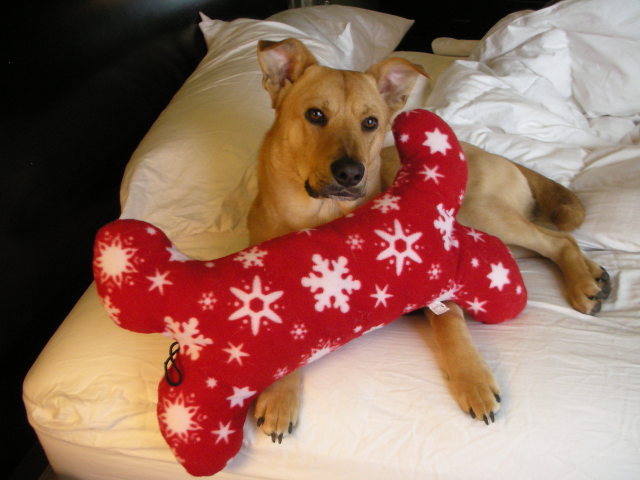 Very Scared Dog
Question
Happy
My dog is 17 months old and is a mixed b
Very Scared Dog
Question
Happy
My dog is 17 months old and is a mixed b
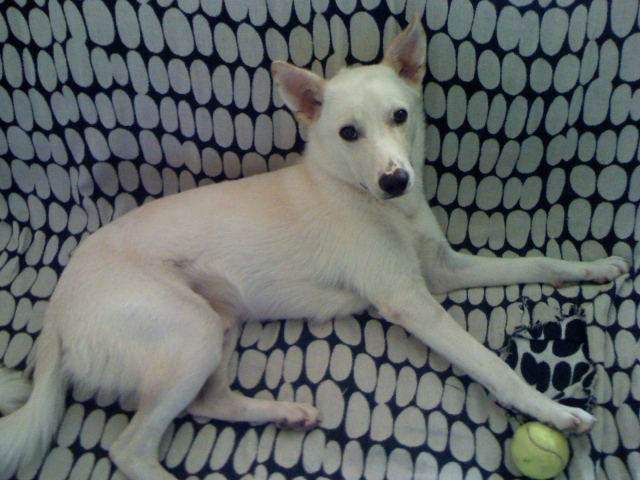 Dog walking problems
Question
Snickers
I have been trying to train my dog SN
Dog walking problems
Question
Snickers
I have been trying to train my dog SN
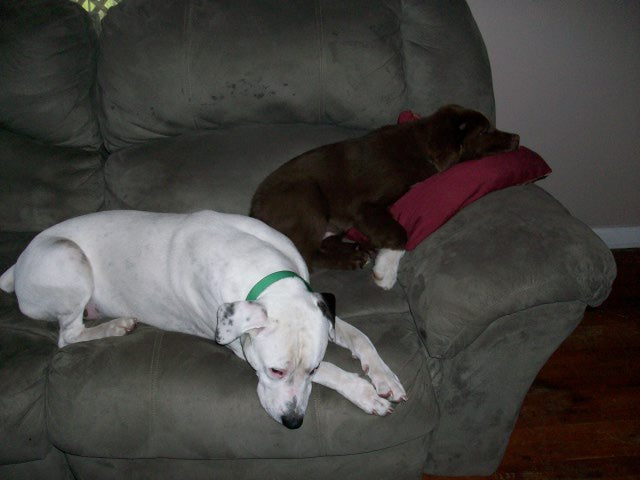 American Bulldog aggression
Question
Buddy and Rez
I have a 2 year old Ameri
American Bulldog aggression
Question
Buddy and Rez
I have a 2 year old Ameri
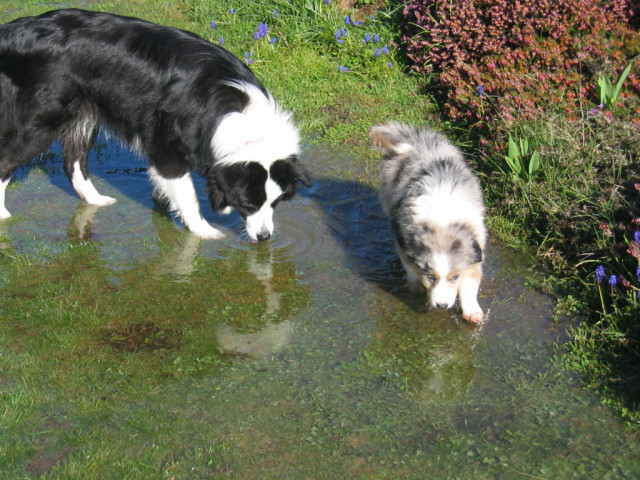 Dog in Heat?
QuestionLily and Jorge
QUESTION: Hello,
We have
Dog in Heat?
QuestionLily and Jorge
QUESTION: Hello,
We have
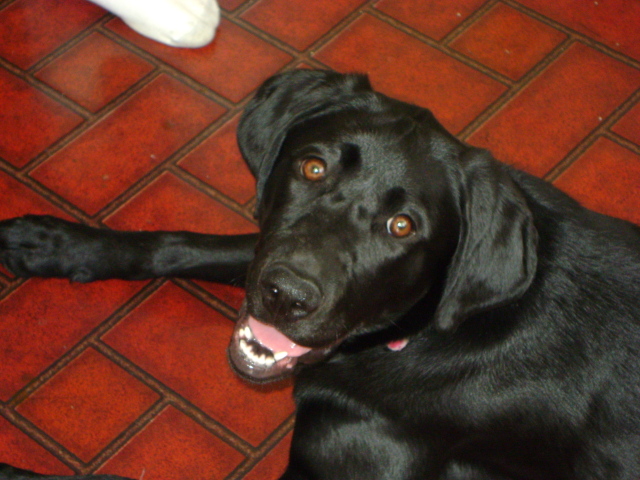 Black lab - 1 yr
QuestionSheba
QUESTION: My lab loves to bite her
Black lab - 1 yr
QuestionSheba
QUESTION: My lab loves to bite her